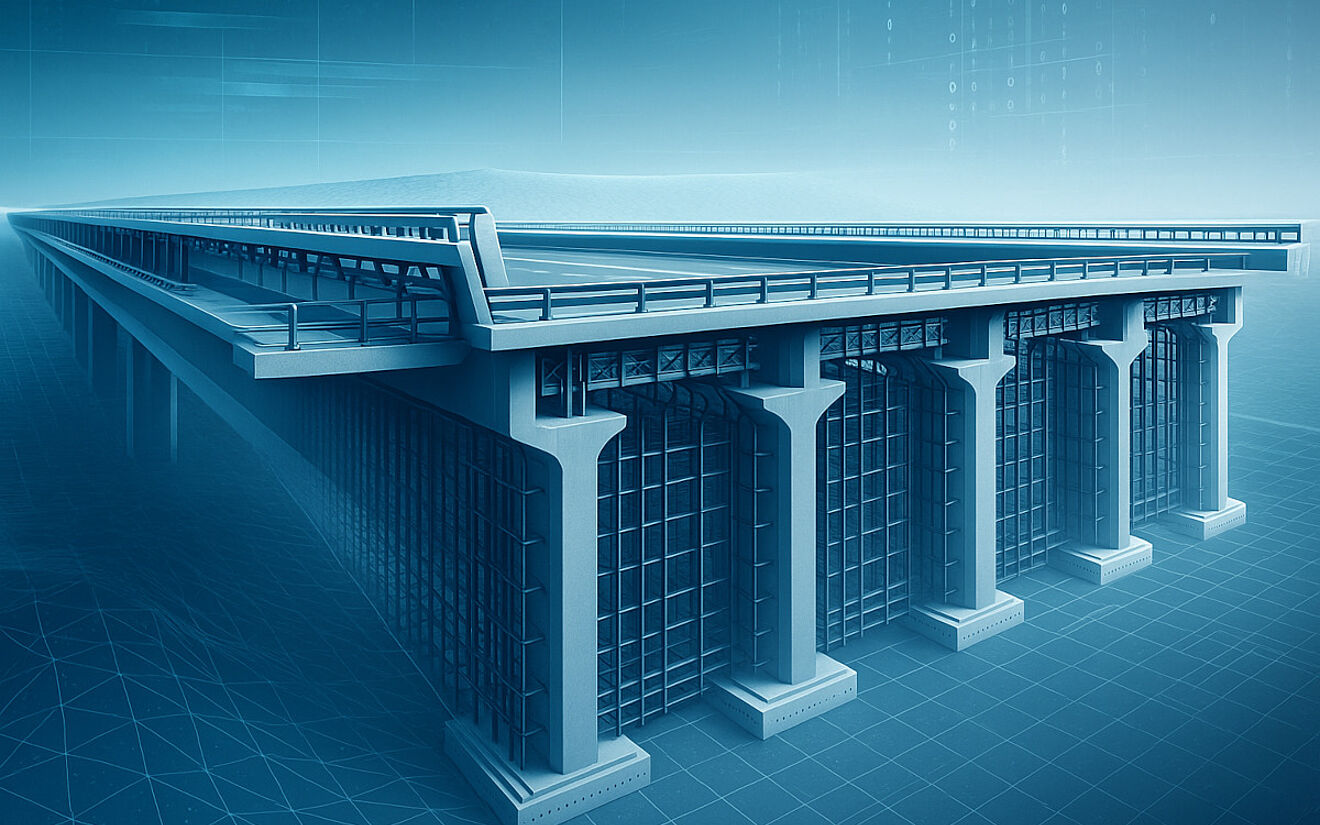AI Visualizer in ALLPLAN: Use cases and examples for prompts
Artificial intelligence (AI) is transforming design workflows across the architecture, engineering, and construction (AEC) sector. But while much of the initial focus has been on generative design tools for architects, engineers have rightly asked: where is the AI that supports our work?
The answer is, it’s here – and it’s already solving practical problems for engineering teams. From automating complex modeling tasks to enhancing structural analysis and accelerating documentation, AI is being applied in ways that improve accuracy, save time, and reduce risk. Keep reading to see how ALLPLAN is delivering AI-driven solutions that are tailored to the realities of engineering projects, and where we’re heading next.
AI in Action: Tools Engineers Can Use Today
AI Visualizer: Generative Image Creation for Design Context and Communication
The AI Visualizer in ALLPLAN applies generative AI to produce high-quality imagery from minimal input – such as rough geometry, material selections, or even descriptive text.
Although the most obvious use case is for architectural ideation, the tool is increasingly being used by engineers for early-stage exploration, stakeholder engagement, and design communication. For example, a bridge designer might use the AI Visualizer to present structural concepts in context, such as how a new overpass fits within an urban or rural setting.
Another use would be for generating visual alternatives for retaining wall facings or infrastructure finishes without building detailed 3D renderings. The AI Visualizer could also produce non-technical illustrations for clients or public consultations, accelerating approvals without waiting on formal renderings.
Because the tool is cloud-based, it doesn’t require high-end hardware. Engineers can create multiple variations in seconds and refine them iteratively – ideal for proposal development, internal reviews, or explaining complex infrastructure projects to non-technical stakeholders.
The AI Visualizer is an example of how AI can directly support the human side of engineering: communication, collaboration, and creative iteration. It reduces the need for outsourced renderings or specialist support in the early phases of design, saving time and increasing agility across multidisciplinary teams.
Logic-Based AI for Structural and Engineering
AI doesn’t need to be generative to be powerful. In ALLPLAN, engineers are already benefiting from logic-based automation embedded in tools like the SCIA Autoconverter and PythonParts.
These tools reduce the manual burden of creating reinforcement layouts or generating structural analysis models. Engineers can seamlessly transfer 3D design data between ALLPLAN and analysis tools like SCIA or FRILO – and reimport changes without rework. The result is faster iteration, higher precision, and tighter coordination between disciplines.

Automation with Parametric Modeling
ALLPLAN’s parametric toolset enables rapid modeling of roads, intersections, slabs, and other complex civil infrastructure elements. These workflows are further enhanced by automation – streamlining geometry creation, ensuring compliance with design rules, and maintaining consistency across revisions.
This is particularly valuable in projects with repeating elements, variable site conditions, or changing design requirements. Engineers can focus on optimization and coordination, not repetitive modeling tasks.
Semi-Automated Drawing Generation
Although the drawing process remains a critical part of construction delivery, much of the work to generate views, sections, and layouts can now be accelerated using smart tools in ALLPLAN. These capabilities help engineers prepare documentation more efficiently – especially on large-scale or fast-paced projects – while maintaining compliance with project standards.

What’s Coming Next: AI for Engineers on the Near Horizon
Conversational BIM
Expect to see the integration of AI models – such as Gemini 2.0 – with BIM software, enabling natural-language interaction with BIM data. Engineers will soon be able to ask model-specific questions, like “What’s the total length of M20 rebar in this slab?” or “Where are the T-beams located on level 2?” and receive instant, structured responses.
This will simplify data access, reduce manual filtering, and support faster decision-making, particularly on complex or multi-disciplinary projects.
Knowledge Extraction from PDFs
Manual document review is time-consuming. AI-powered knowledge extraction can identify title block metadata, detail references, scales, and drawing contents at high speed – making PDF plans searchable, sortable, and linkable to BIM models. This capability is especially relevant for projects involving legacy documentation, scanned plans, or mixed-format data sets.

Reasoning Models for Structured Problem Solving
Reasoning models are a revolution in AI. These are a new class of AI that will be capable of breaking down complex engineering tasks into sequential steps. These models could support workflows like code compliance checking, material selection, or even structural system optimization by pulling data from multiple sources and offering proposed solutions.
From Point Clouds and 2D Drawings to BIM
Another emerging area is the application of AI to automate the conversion of point clouds and 2D drawings into BIM-ready geometry. This approach has significant potential for infrastructure retrofit projects, existing conditions modeling, or renovation planning, where speed is essential.

AI for Sustainable Design and Material Optimization
At the Georg Nemetschek Institute, research is underway on how AI can support non-destructive evaluation of concrete and steel components, enabling better reuse and lifecycle planning. AI is also expected to assist with automated Lifecycle Assessment (LCA) workflows, proposing materials and evaluating environmental impacts earlier in the design phase.
Built for Engineering, Ready for Today
The role of AI in engineering is no longer a future concept – it’s a present-day advantage. In ALLPLAN, engineers are already using AI-powered tools and automation to model, analyze, reinforce, visualize, and document with greater speed and precision.
And we’re not stopping there. With features like Conversational BIM, intelligent model enrichment, and reasoning-based problem solving on the horizon, expect to see tools that reflect the complexity, rigor, and responsibility of engineering practice.




